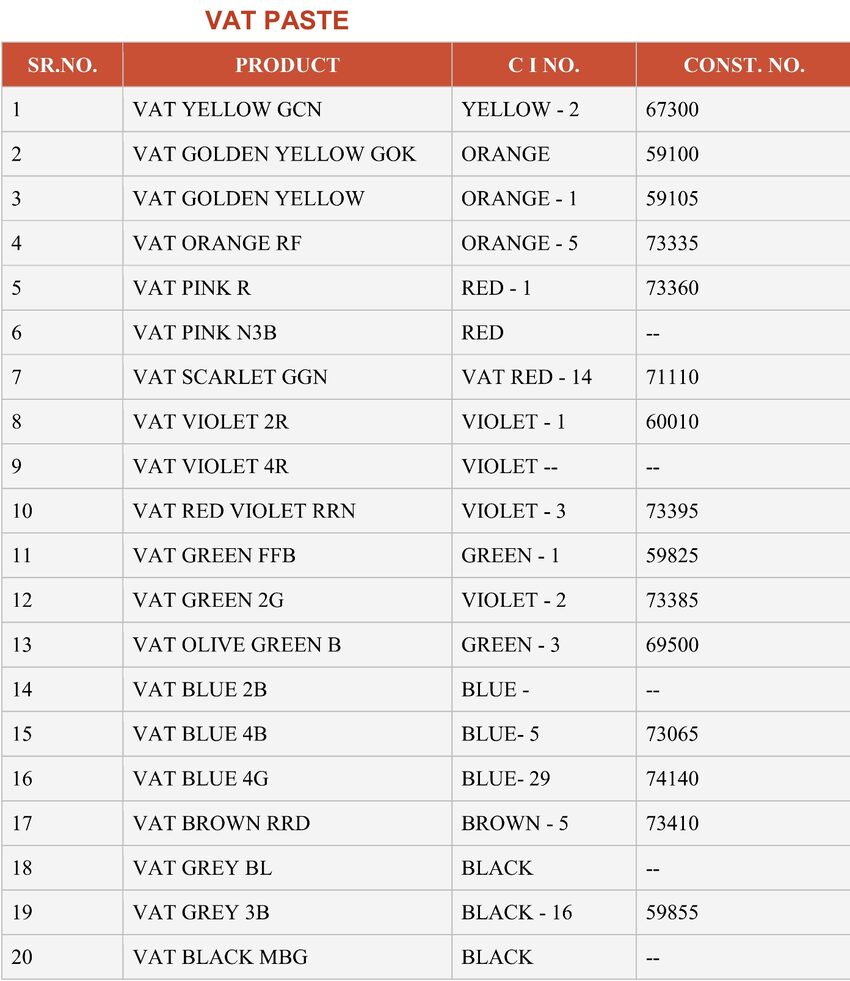Vat dyes are a class of synthetic dyes primarily used to color cellulosic fibers such as cotton, viscose, and linen. These dyes are characterized by their excellent wash and light fastness properties, making them suitable for applications where durability and color stability are important, such as in textile dyeing and printing.
The name "vat" originates from the method of dyeing these dyes were historically prepared in large vats. Vat dyes are insoluble in water and require a reduction process to become soluble and dye the fibers. This reduction process involves converting the insoluble form of the dye into a soluble form, which can then penetrate the fibers and form insoluble colored particles within them.
Key characteristics of vat dyes include:
-
Excellent Colorfastness: Vat dyes are known for their exceptional resistance to fading when exposed to light and washing, making them suitable for use in textiles that undergo frequent laundering or outdoor exposure.
-
Range of Colors: Vat dyes are available in a wide range of colors, including deep and vibrant shades, making them versatile for various dyeing and printing applications.
-
Compatibility with Cellulosic Fibers: Vat dyes have a high affinity for cellulosic fibers, allowing them to penetrate deeply and evenly into the fiber structure, resulting in uniform coloration.
-
Resistance to Bleaching: Vat-dyed textiles are typically resistant to bleaching agents, which helps maintain the color intensity and longevity of the dye.
The dyeing process with vat dyes involves several steps:
-
Reduction: The insoluble form of the vat dye is reduced to a soluble form using a reducing agent such as sodium dithionite or zinc dust. This reduction step is often carried out in an alkaline solution.
-
Dyeing: The reduced dye solution is then added to the dye bath, where the material to be dyed is immersed. The dye penetrates the fibers and forms insoluble colored particles within them as it oxidizes and reverts to its insoluble form.
-
Oxidation: After dyeing, the material is exposed to air, which oxidizes the dye back to its insoluble form, fixing the color within the fibers.
Vat dyes are commonly used in the textile industry for dyeing a wide range of products, including clothing, upholstery fabrics, and home textiles. They are also used in industrial applications such as dyeing denim fabrics and printing textiles.


